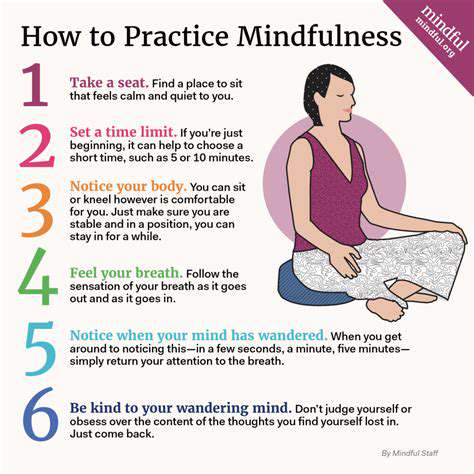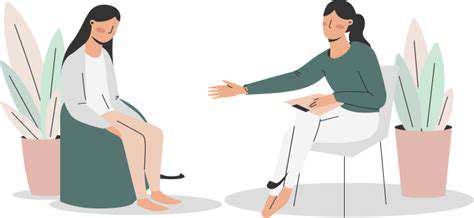How to Stop an Anxiety Attack: Effective Techniques
For those who prefer structure, the 4-7-8 method works wonders. Empty your lungs completely first. Then: inhale (4 counts), hold (7 counts), exhale (8 counts). This uneven ratio amplifies relaxation. Pro tip: place one hand on your chest, the other on your belly—only the lower hand should rise. This ensures diaphragmatic breathing rather than shallow chest breaths that can worsen anxiety. With regular practice, these techniques become instinctive, creating a portable anxiety toolkit you can access anywhere—from boardrooms to crowded subways.
Progressive Muscle Relaxation
Anxiety often manifests as physical tension we don't even notice—clenched jaws, tightened shoulders, cramped hands. Progressive relaxation brings awareness to these hidden stress holders. Start with your dominant foot: curl toes tightly for 7 seconds, then release abruptly, noticing the flood of warmth as muscles let go. Move upward—calves, thighs, glutes—alternating tension and release. The key lies in the contrast; the more intensely you contract, the deeper the subsequent relaxation.
For enhanced effect, pair this with sensory imagery. As you release each muscle group, imagine stress melting away like ice in sunshine, or visualize tension as dark liquid draining from your body. Some find it helpful to whisper release with each exhalation. This dual approach—physical and mental—often yields better results than either technique alone. Over time, you'll develop an internal body map of tension patterns unique to your stress response.
5-4-3-2-1 Grounding Technique
When anxiety makes the world feel unreal or overwhelming, sensory grounding reconnects you with tangible reality. Look around and name: 5 objects you can see (notice textures, colors), 4 things you can touch (describe surfaces), 3 ambient sounds (distant traffic, AC hum), 2 detectable smells (coffee, laundry), 1 taste (gum, toothpaste residue). This method works because anxiety lives in hypothetical futures—grounding yanks you back to the safety of now.
For tech-assisted grounding, try the 54321 app variation: snap photos of your 5 visual items, record the 3 sounds, keep a textured object in your pocket (like a worry stone). Some carry grounding kits—small bags containing strongly scented items (peppermint oil), textured fabrics (velvet, burlap), sour candy for intense taste stimulation. The more senses engaged, the quicker the nervous system resets.
Mindfulness and Relaxation Practices for Long-Term Management

Body Scan Meditation
Mindfulness isn't about emptying your mind—it's about observing without getting swept away. The body scan cultivates this skill through systematic attention. Lie comfortably and mentally zoom in on each body part starting from toes. Notice tingling in your left pinky toe? Aches in right shoulder? The goal isn't to change sensations, but to witness them with detached curiosity—like a scientist observing specimens. This builds tolerance for discomfort, preventing the oh no! reaction that escalates anxiety.
For beginners, guided recordings help maintain focus. Try varying scan directions—sometimes foot-to-head, other times left-side-only. Many discover surprising tension patterns; one client realized she perpetually clenched her left fist when stressed. With practice, you'll catch tension earlier, before it builds to painful levels.
Nature Immersion Therapy
Studies show spending 20+ minutes in green spaces lowers cortisol more effectively than urban walks. But true forest bathing (Japanese shinrin-yoku) requires more than physical presence. Engage all senses deliberately: trace leaf veins with your fingertips, inhale decomposing wood's earthy scent, listen for layered birdcalls. This multisensory absorption creates a cognitive vacation from ruminative thoughts.
No forest nearby? Create micro-nature experiences: grow aromatic herbs (lavender, rosemary) for tactile engagement, play nature soundscapes with varied frequencies (bird songs, rainfall), use nature photography as focal points during breathing exercises. Even visualizing detailed natural scenes can trigger relaxation responses.
When to Seek Professional Guidance

Red Flags Not to Ignore
While self-help strategies work for many, certain signs warrant professional intervention. These include: anxiety lasting most days for over 6 months, avoidance of normal activities (work, socializing), or physical symptoms like unexplained chest pains/dizziness. Particularly concerning are thoughts of self-harm or feeling detached from reality—these require immediate attention.
Track symptom patterns using mood apps or journals. Note triggers, duration, intensity (1-10 scale), and coping attempts. This data helps clinicians tailor treatment. For example, cognitive behavioral therapy (CBT) might focus on catastrophic thinking if logs show consistent what if spirals before attacks.
Treatment Roadmap
Effective anxiety treatment often combines modalities. A typical progression might include: 1) Psychoeducation (understanding anxiety's mechanisms), 2) CBT (restructuring thought patterns), 3) Exposure therapy (gradual confrontation of fears), and 4) Medication (if needed for chemical imbalances). Newer options like biofeedback and neurofeedback show promise, teaching patients to consciously regulate physiological responses.
When choosing a therapist, inquire about their anxiety-specific training. Look for credentials like CCBT (Certified CBT Therapist) or membership in anxiety disorder associations. Many now offer hybrid models—in-person sessions supplemented by app-based skill practice between visits.
Performance metrics serve as vital signposts for organizational health. Just as anxiety management requires tracking emotional indicators, businesses need quantifiable data to navigate challenges effectively. Both domains benefit from identifying patterns, measuring progress, and adjusting strategies accordingly.